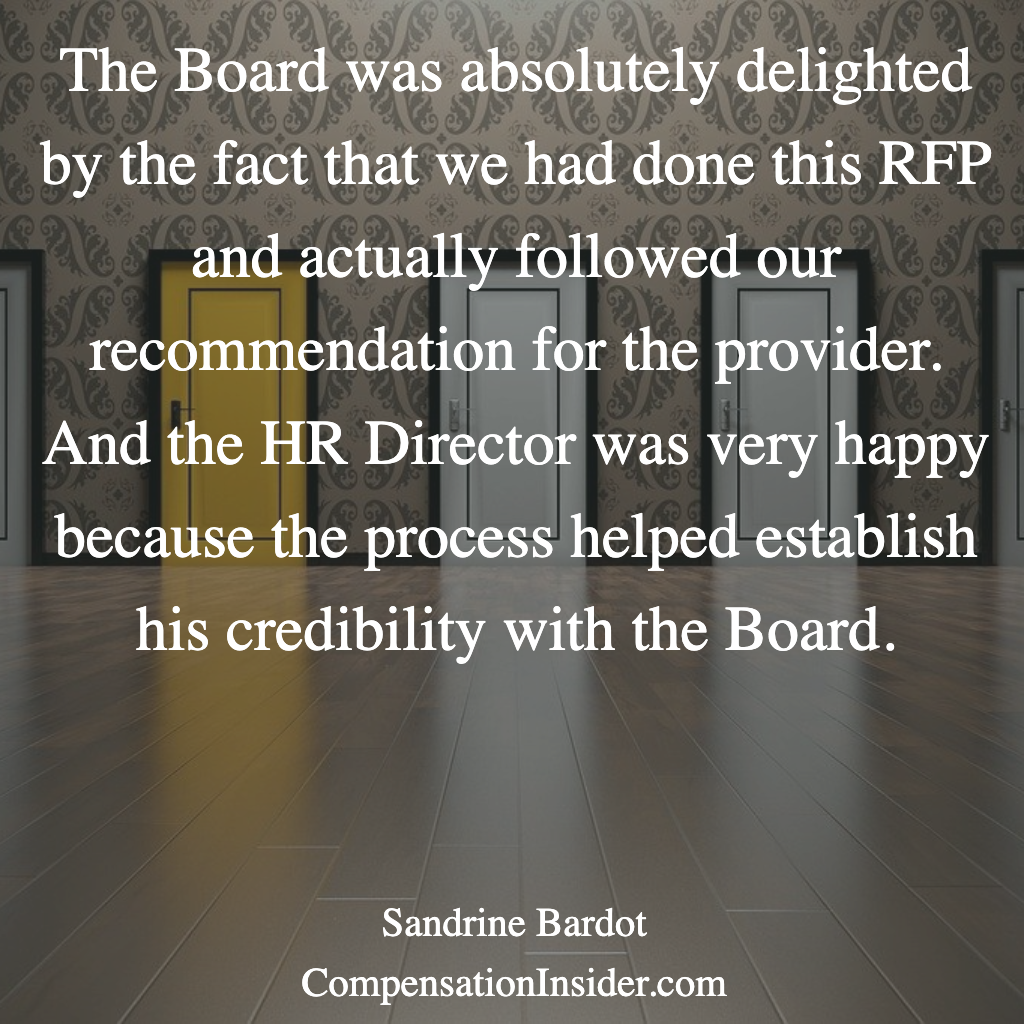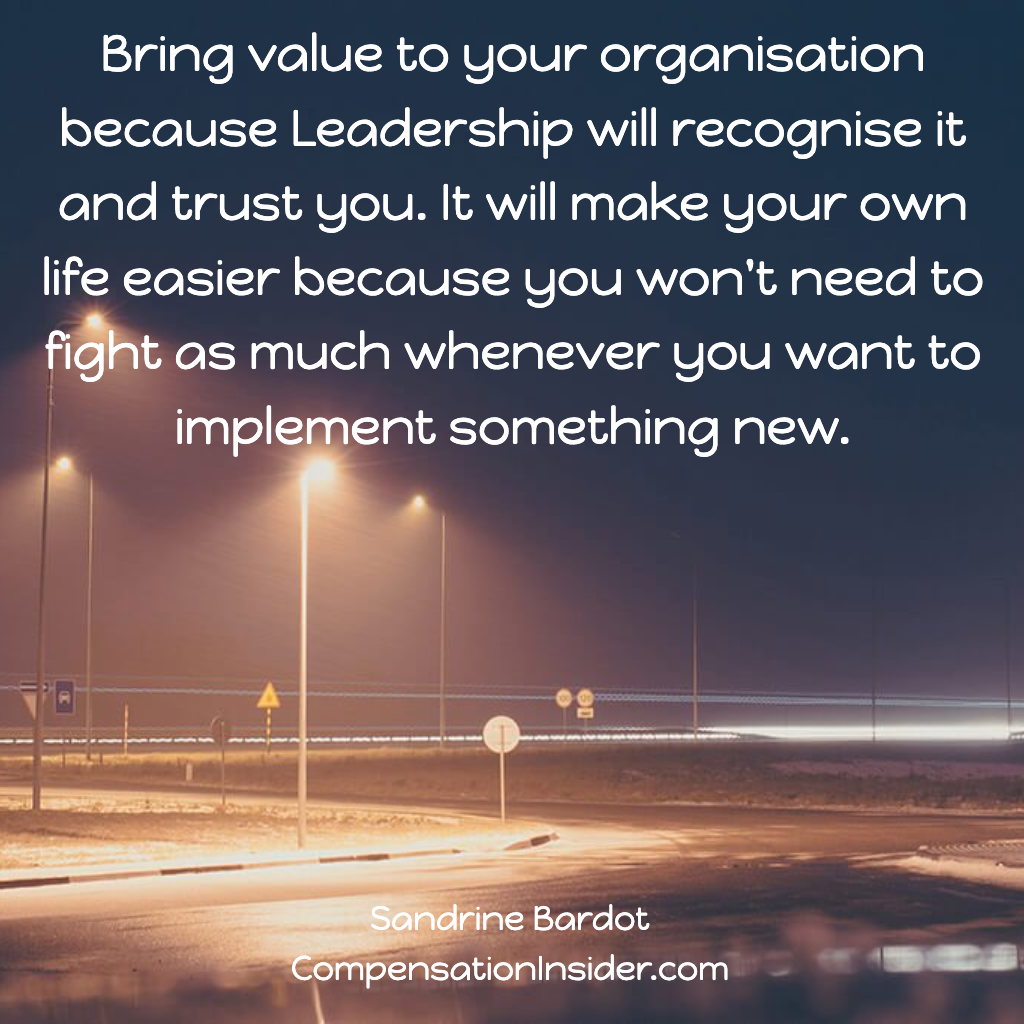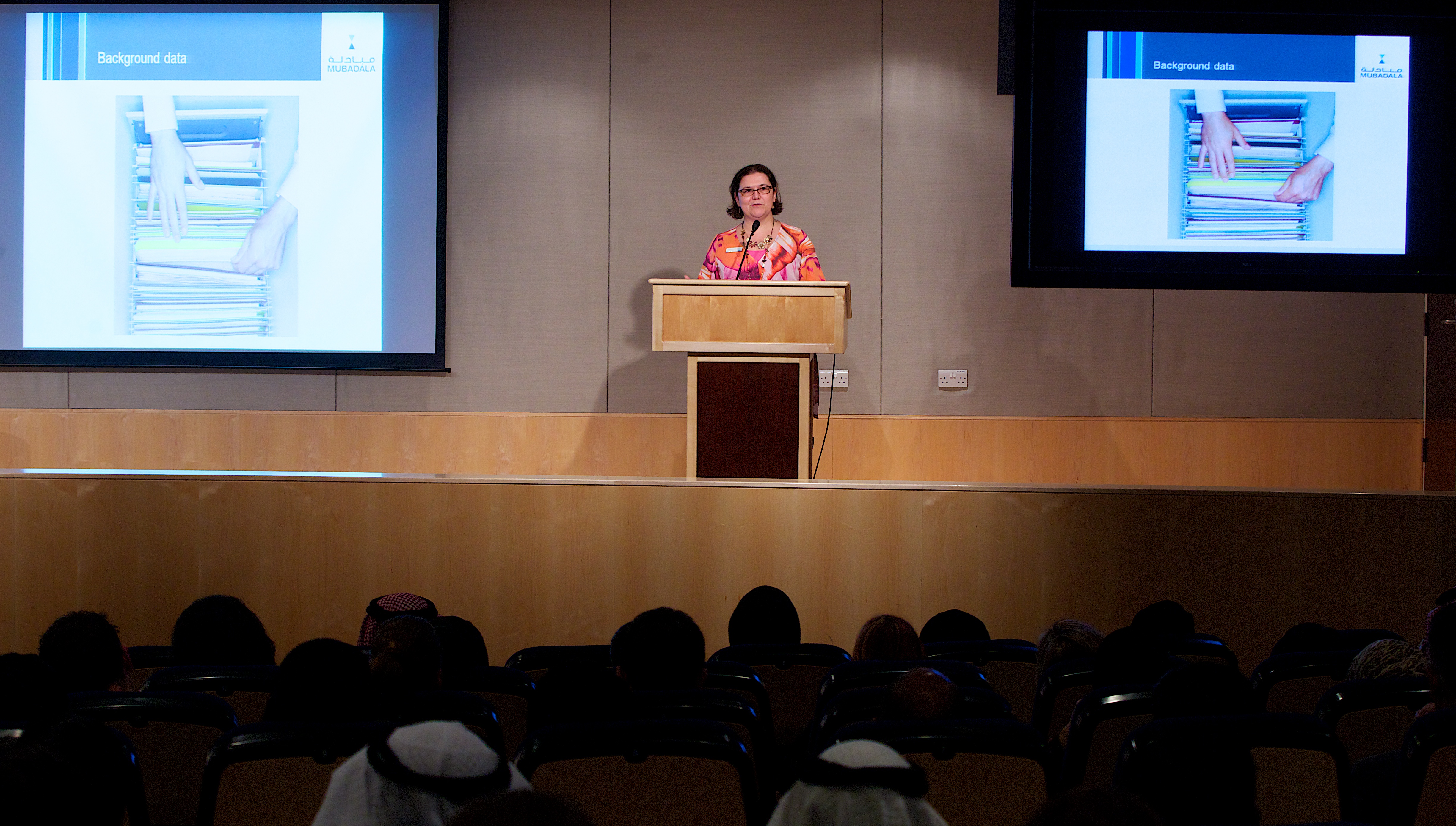SUMMARY
- I once convinced a client to perform a proper RFP instead of “going to Company X” as per Board instructions.
- This was extra work for me (unpaid), for helping set up a project that I couldn’t deliver myself.
- The HR Director established his credibility. The company retained as final choice was cheaper and its proposal was more tailored to the needs of the client. And I was re-hired to project-manage the big consultancy !
- Moral of the story : going the extra mile brings value to your (internal) client, and therefore to you.
RELATED POSTS
In Real Life – A story of choosing to ask for forgiveness rather than for permission
When your manager says “I don’t know what you do”
INSPIRATIONAL QUOTES


TRANSCRIPT
Hello, and welcome to this episode of Compensation Insider. Today, I would like to talk about adding value to your (internal) client.
A few years ago, I was working with a semi-government entity in Abu Dhabi. I had already done Phase One of the project, which was an audit of the compensation practices. At the end of that, there had been a decision to go for a new incentive plan for the organization, especially for the executives.
The Board had told the HR Director to “just go to Company X and ask them to do it”.
At the time I was advising the client and I knew that this project wouldn’t be for me to do, because it had some technical aspects requiring actuaries and lawyers etc. Obviously for me as an independent consultant, this is not a service that I can provide, but I was there to help the client.
I said to the HR Director “I know that the Board has told you to go to company X. But the challenge is that in this part of the world, most of the time, people only know about Company X because they’re the largest consultancy, but you should really follow a proper proposal process. You might be surprised by the quality of the proposals that you’re going to receive”.
After insisting with my client, he eventually agreed to do the Request For Proposal (RFP), but he wanted me to drive the process for the company.
So I prepared the RFP template with the procurement team, identified the evaluation criteria and led the meetings with the 5 consulting companies that we reached out to in order to receive their proposals. Then I was part of the people who evaluated each of the proposals. The HR director did an evaluation, I did one and the HR Advisor did the third evaluation.
Surprisingly enough, it was not company X, but another company that was preselected by us to be presented to the Board for confirmation. As a result, the HR Director was hesitant at first : “I’m in a bit of a weird situation now, because the Board told me to go to Company X, but I didn’t go just to Company X, I also went to others. And now we’re saying that we think that we should go with another company to deliver Phase 2 of the project. The Board members are going to be upset with me for that.”
So he asked me to prepare a presentation so that he could explain why we had done an RFP with multiple criteria for selection and why we were thinking that working with the other consultancy would be a good choice for the organization.
It turns out that the Board was absolutely delighted by the fact that we had done this RFP and actually followed the recommendation that we had come up with. The HR Director was very happy because it helped to establish his credibility with the Board.
Not only the proposal that was selected was actually more adapted to the need of the organization because the consultancy had demonstrated that they had already done similar projects in a similar industry across the GCC, and so we felt that they were more adapted to the type of project, but the cost was significantly less than the proposal we had received from Company X, even though it was still quite an investment.
I even joked with the HR Director : “See, you have saved with this RFP more than the fee that I charged you for the whole Phase One of the project. So, my work for you was free !”
Eventually that was really good for me as well because I ended up being rehired for Phase Two to manage the big consultancy. At the time, the client didn’t have an internal Compensation & Benefits team experienced enough to handle the project. They wanted to make sure that somebody was there to project-manage and ensure that the big consultancy was not just doing a copy paste of some work they had done for somebody else, ensure that the proposal of the new incentive design would fit with the company culture, and ensure that the project would fit with the objectives of the organization.
So that turned out to be good for me as well. But I think it all came from this principle that even though that was not part of my remit, I did a little bit of extra work, for free, after the end of Phase One to produce the RFP. Not only did I add value because the client found a provider that suited their needs better, they also saved money. And it served me good as well as I got an extension of my contract.
That principle of always adding value does not apply just as a consultant. It’s also true when you work in-house. It is good for you to bring extra value to your organization because your leadership recognizes it, and then will come back to you and trust you. It makes your own life easier later on because then you don’t need to fight as much whenever you want to implement something. Management will think “We trust what he/she is doing”, and therefore it’s easier for you to get approvals for your projects.
So try to always go the extra mile. I guess that’s my lesson for today !
Thank you so much for listening and I wish to see you next week.



Speak Your Mind